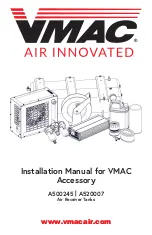
SECTION 7 – RECHARGE AND RESETTING PROCEDURES
UL EX3470 ULC EX3470
2014-SEP-01 REV. 11 PAGE 7-1
R-102 Restaurant Fire Suppression Manual
The recharge information listed in this section deals with the
limitations and parameters of this pre-engineered system. Those
individuals responsible for the recharge of the R-102 system
must be trained and hold a current ANSUL certificate in an
R-102 training program.
For continued fire protection, the R-102 restaurant fire
suppression system must be recharged immediately after
use. Recharge procedures for single, double, and multiple-tank
systems are as follows.
CLEANUP PROCEDURES
Although there is no unusual cleanup procedure of ANSULEX
or ANSULEX Low pH agents, due to the alkaline nature of these
agents, they should be cleaned from kitchen surfaces within 24
hours after system discharge. The reaction from the wet chemi-
cal agent on cooking grease or oil produces a foamy bi-product
that can be wiped up with a cloth or sponge. The following
procedures should be followed:
!
CAUTION
Before attempting any cleanup, make certain that all fuel
sources to the equipment to be cleaned have been shut off.
Make certain that the exhaust hood and all appliance electri-
cal controls have been de-energized to avoid any chance of
electrical shock resulting from the cleaning process or from
electrically conductive alkaline liquid agent and/or its residue.
Make certain all surfaces to be cleaned have cooled down to
room temperature.
Do not use water to clean any appliances that contain hot
grease or cooking oils. Doing so may result in violent steaming
and/or spattering causing personal injury.
1. The agent is non-toxic; however, food product and cooking
grease/oil that has come in contact with the agent will no
longer be suitable for human consumption and should be
discarded.
2. Sponge up as much of the agent as possible using sponges
or clean rags. Dispose of these sponges or rags in a local
sanitary land fill site in accordance to local authorities.
!
CAUTION
Wear rubber gloves during cleanup as sensitive skin may
become irritated. If the ANSULEX agent or its residue
comes in contact with skin or eyes, flush thoroughly with
clean water.
3. Using hot, soapy water and either a clean cloth or sponge,
wipe away all foamy residue and thoroughly scrub all
surfaces that have come in contact with the agent.
4. After thoroughly cleaning all affected surfaces, adequately
rinse and allow to completely dry before re-energizing the
equipment.
RECHARGE
NOTICE
Determine the cause of system discharge and
correct immediately before performing system
recharge.
1.
Remove the enclosure cover from the AUTOMAN
regulated release assembly and each regulated actuator
assembly.
2. From tank in regulated release enclosure: Disconnect the
expellant gas hose from each tank adaptor assembly.
From tank in mounting bracket or mounting enclosure:
Disconnect expellant gas piping union at each tank adaptor
inlet line(s).
3. Disconnect distribution piping union at each tank adaptor
outlet line(s).
4. From tank in enclosure: Remove tank.
From tank in bracket assembly: Loosen wingnut, disengage
bracket band, and remove each tank.
5. Remove each tank adaptor/tube assembly and complete
the following:
a. Remove o-ring and inspect for damage.
b. Clean and coat o-ring with a good grade of extreme
temperature grease and reinstall into adaptor groove.
See Figure 7-1.
c. Remove 1/4 in. vent plug.
d. Clean and inspect for free movement and corrosion. If
necessary, replace Vent Plug (Part No. 74247).
e. Reinstall vent plug into adaptor body.
O-RING
FIGURE 7-1
000364
Summary of Contents for R-102
Page 2: ......
















































